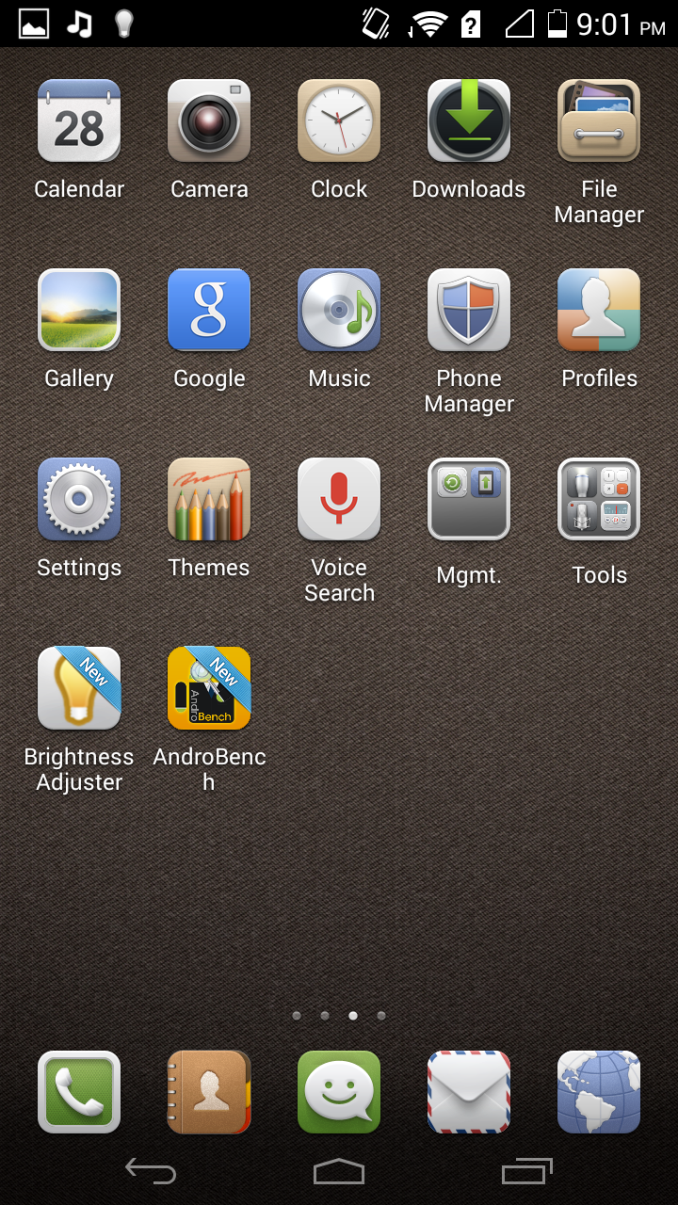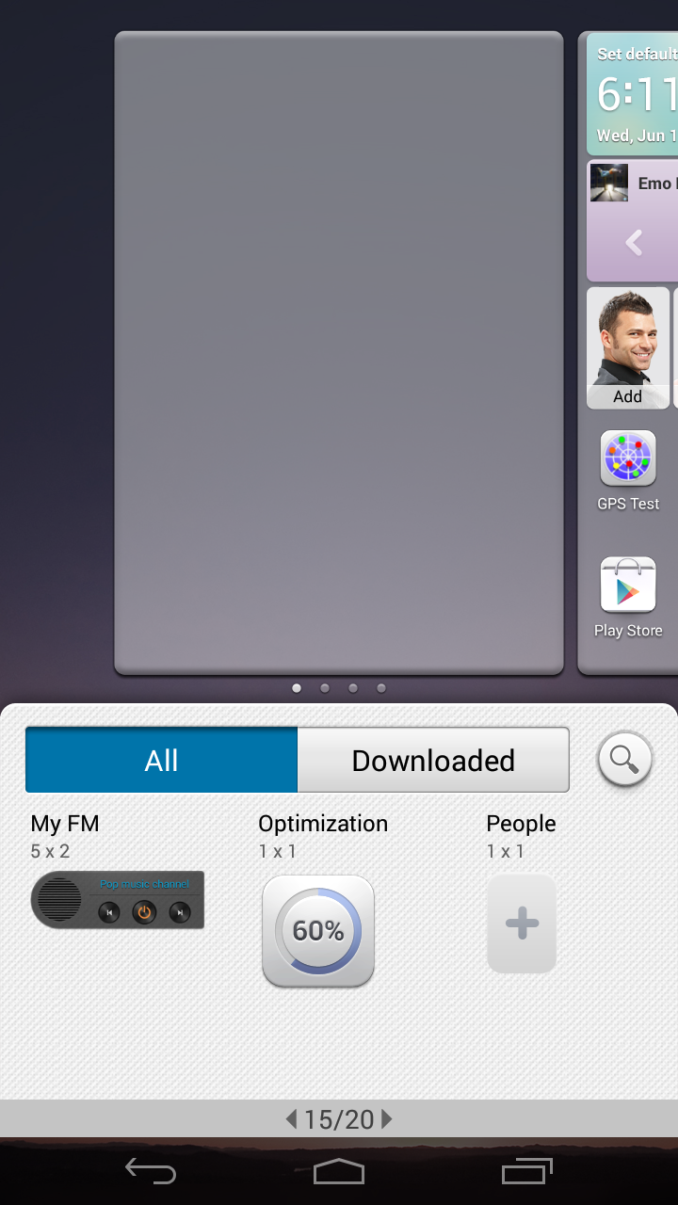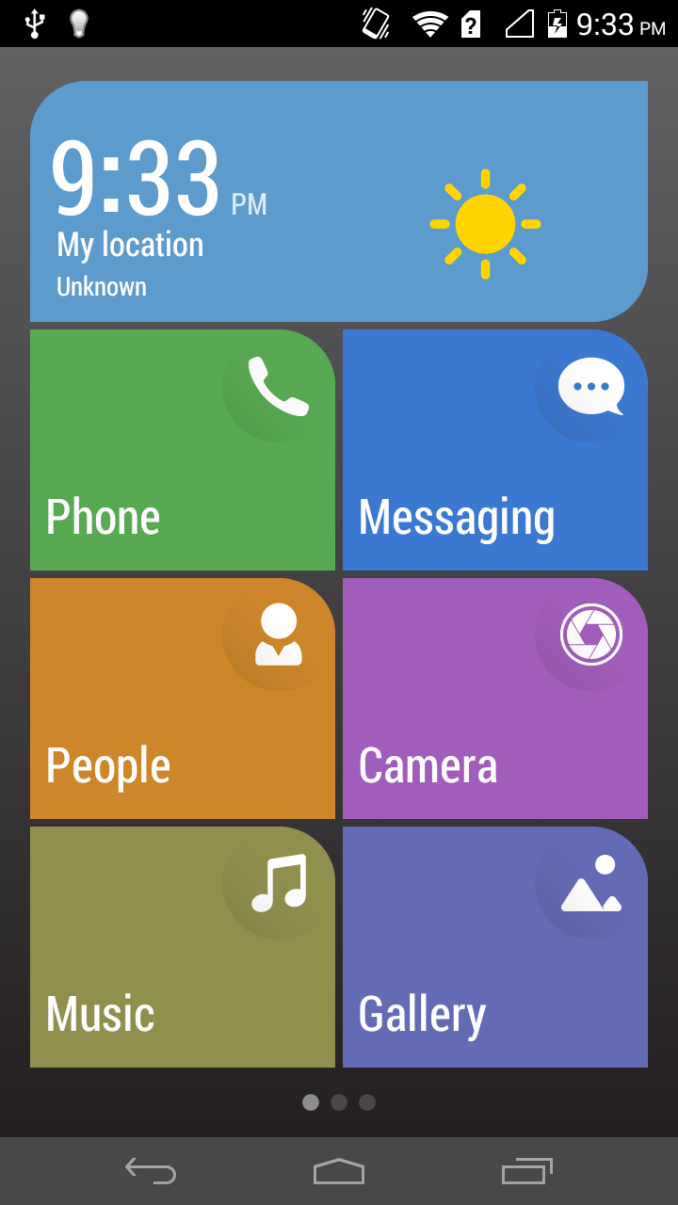Huawei Ascend Mate 2 Review: Incredible Battery Life & Value
by Anand Lal Shimpi & Joshua Ho on June 12, 2014 9:00 AM EST- Posted in
- Smartphones
- Huawei
- Mobile
- Ascend Mate 2
Software
While fans of AOSP and those that generally like to flash custom ROMs often don't care at all about the stock UI that comes with a phone, the vast majority of people end up using whatever ships with the phone. It's not unusual to see users refusing to update past the launch firmware, so it's important to evaluate the software as-is, rather than focusing upon updates that could arrive months after the initial launch. In this case, we'll be looking at Huawei's EmotionUI 2.0 Lite, which runs on top of Android 4.3 for the launch firmware.
Unfortunately, if there's any one place where the Mate2 falls flat, it's the software. That's not to say that it's necessarily bad, it's just not as surprisingly good as other aspects of the device. The UI is very much like MIUI in style, and overall usability. While some may find this to be great, it can actually be a problem for those used to UIs more similar to AOSP UI. This means that by default, the launcher has no app drawer, and every application icon is placed somewhere on a homescreen. Therefore, searching for an application can be difficult if you don't immediately recall which homescreen it's on. Editing homescreens is very much similar to the experience one might have experienced on TouchWiz 4 as seen below, and while it's easy to understand, it doesn't really mesh well with currrent Android design guidelines. However, for the most part applications in the UI are built to fit Google's design guidelines, so using a custom launcher can alleviate some of the issues. I'm not too sure about the general aesthetics of the UI though, as there are some issues going on there as well, especially in how the iconography is distinctly un-Android. I should also mention that we both experienced issues with the camera application crashing when it's opened from a sleep state, although for some reason as soon as we tried to get a screenshot of the issue it mysteriously stopped happening. The simple home mode is also surprisingly useful as a tile-based launcher, although it effectively disables most widgets. I've included a screenshot of this mode below as well.
Outside of some oddness in the UI design, Huawei included a bunch of surprisingly useful applications. For example, the backup utility makes it possible to save applications, photos, and system data to the microSD card or internal storage. This means that a factory data reset no longer requires a significant amount of time to restore settings and applications, something that most Android phones can't do. Huawei also included the ability to selectively permit what applications are allowed to hold wakelock, which works based upon a whitelist system. Huawei also includes three different power plans, Smart, Endurance, and Normal. It seems to me that Smart and Normal share similar CPU/GPU governors, but it's likely that network management is the major difference in this case. Endurance seems to take things one step further by clocking the CPUs down to a max of 1 GHz (998 MHz to be exact), and while there's nothing wrong with this, it's probably not the best idea from a race to sleep perspective. There are a lot of neat features that I've included screenshots of in the gallery, but most of these are small touches rather than major features to discuss.




















49 Comments
View All Comments
amicic - Thursday, June 12, 2014 - link
We need more phones with this battery life (if that means 720p, i'm ok) in 5-5.2" sizes.Kristian Vättö - Thursday, June 12, 2014 - link
I totally agree. If this was a <5" phone, I would buy it on a heartbeat, but 6" is just way too big for my taste.nathanddrews - Thursday, June 12, 2014 - link
1080p and stock KK4.4 on this phablet would be perfect.ColinByers - Monday, September 29, 2014 - link
True. But why get the Huawei Ascend Mate 2 when there are other really good Android phones out there? /Colin from http://www.consumertop.com/best-phone-guide/bstowe9 - Friday, June 13, 2014 - link
That's what she said...SeleniumGlow - Monday, June 16, 2014 - link
Here, I'd like to mention the Lenovo P780 and its massive 4000 mAh battery. I got one for my Dad last week, and whilst he doesn't use Mobile data, he was able to get a nice 5 days of voice call usage and SMS out of it. Other specs are a 5" 720p display, dual sim, and 8 MP rear camera.The only drawback would probably be that it is on Jelly bean (4.2.2) and might never be upgraded.
Fergy - Thursday, June 12, 2014 - link
Why is this phablet being compared to phones? I know a 6 inch phablet has a bigger battery than a 5 inch phone. I know that 6 inch phablet has an easier time cooling the fast chips. What I don't know is how this phablet compares to other phablets.wimbet - Thursday, June 12, 2014 - link
It's big, but it's still a phone that fits in your pocket.vortmax2 - Thursday, June 12, 2014 - link
Agreed, I don't see the Note 3 on many of the comparison charts...extide - Thursday, June 12, 2014 - link
The note 3 is a top tier device, this is a midrange device. They don;t really compete much because of that. I mean yeah they are both phablets, but the price sets them apart. Maybe it would be good to compare to the Note 2, if that phone happens to still be available at low prices.